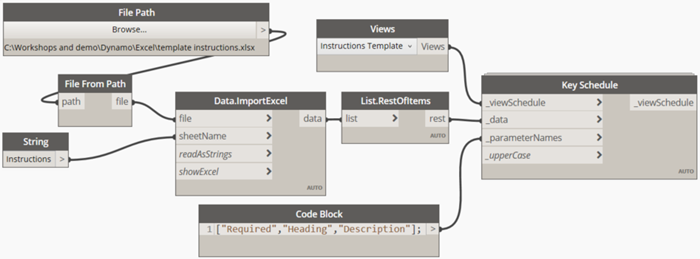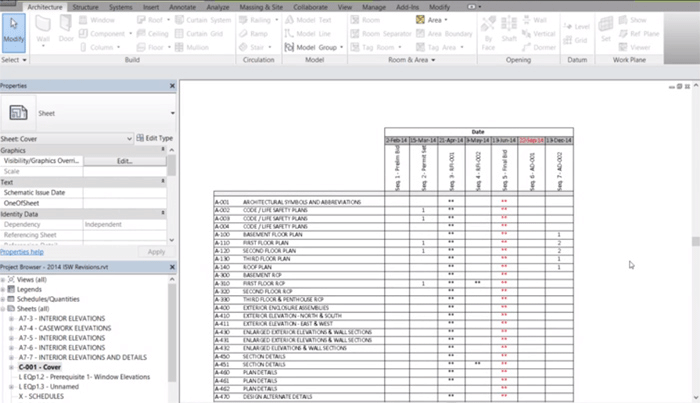Excel-to-Revit: A Game-Changing Operations for Architectural Design - Unveiling the Keys
Are you tired of spending hours on building style? Look no more! Presenting excel-to-revit, the game-changing process that will transform your style procedure. With excel-to-revit integration, you can improve your architectural style, unlock performance, and maximize collaboration within your team. In this short article, we will reveal the keys of this powerful tool, showing you exactly how it can change your design tasks. Prepare yourself to take your architectural design to the following degree with excel-to-revit!
The Power of Excel-to-Revit Combination

Think of the ease of being able to modify and upgrade job data in Excel, and promptly see those changes mirrored in your Revit model. No extra hands-on information access or tiresome updates. With Excel-to-Revit combination, you can conserve time and lower errors by leveraging the power of Excel's solutions and functions to immediately produce precise data in Revit.
Not only does this integration improve performance, yet it also improves collaboration among staff member. You can conveniently share Excel files with colleagues, who can then import the data into their Revit designs. This advertises a smooth exchange of information and makes certain that everyone is collaborating with the most up-to-date data.

Simplifying Building Layout With Excel-To-Revit
Streamlining architectural style is simplified with the usage of Excel-to-Revit (revit plugins). With this effective integration, you can enhance your process and save valuable time throughout the style procedure. By leveraging the capabilities of Excel and Revit, you can seamlessly move data in between both platforms, getting rid of the need for hands-on information access and lowering the risk of errors
Excel-to-Revit enables you to import and export information effortlessly, allowing you to easily update and customize your building designs. You can produce timetables, determine quantities, and create records in Excel, and after that transfer that data straight into your Revit version. This combination makes sure that your layout information is always up-to-date and synchronized, getting rid of the need for hands-on updates and reducing the possibilities of disparities.
By utilizing Excel-to-Revit, you can additionally take advantage of the effective computational capacities of Excel. You can carry out complicated computations, evaluate data, and automate repetitive tasks, all within Excel. Then, with just a couple of clicks, you can import the outcomes back into Revit, permitting you to make enlightened design decisions and optimize your architectural layouts.
Opening Performance: Discovering the Excel-to-Revit Workflow
Optimize your productivity by perfectly integrating Excel and Revit for a more efficient process. With the Excel-to-Revit workflow, you can open an entire brand-new level of performance in your architectural style process. By utilizing the power of Excel's data administration abilities and combining it with the flexibility and precision of Revit, you can simplify your layout procedure and conserve valuable time.
Among the essential benefits of this combination is the capability to import and export data in between Excel and Revit. This indicates that you can quickly transfer job info, such as area timetables or product amounts, from one software to the other, getting rid of the requirement for hands-on data entrance and minimizing the chances of errors. You can likewise create personalized solutions and calculations in Excel to automate repeated tasks and carry out complicated computations, which can after that be flawlessly incorporated right into your Revit models.
Furthermore, the Excel-to-Revit operations enables better coordination and partnership in between team members. With Excel functioning as a central information center, multiple employee can work on various aspects of the task at the same time, sharing and upgrading information in real-time. This not just improves communication yet likewise guarantees that everyone is functioning with the most current data, getting rid of the risk of disparities.
Maximizing Collaboration: Excel-to-Revit for Architectural Teams
By perfectly incorporating Excel and Revit, architectural teams can significantly enhance cooperation and achieve a lot more effective layout end results. When using this effective workflow, you can conveniently move information between Excel spread sheets and Revit versions, streamlining the style process and enhancing communication among employee. With Excel-to-Revit combination, you can easily import job information, such as area routines, product amounts, and job specifications, directly right into Revit, getting rid of the requirement for hand-operated information entry and decreasing the chances of errors. This seamless connection permits for real-time updates, making sure that everybody is dealing with one of the most updated information and preventing discrepancies in between different papers.
Additionally, by leveraging Excel's effective estimation abilities, you can perform complicated computations and analysis on your layout information, giving important understandings and driving informed decision-making. This combination likewise allows you to export information from Revit to Excel, allowing you to develop extensive records, graphes, and graphs for discussions and analysis. This collective process promotes reliable communication and coordination among employee, as Excel works as a central center for data administration and sharing.
General, by welcoming the Excel-to-Revit workflow, architectural teams can achieve higher degrees of cooperation, efficiency, and accuracy in their layout procedure. revit tool. This combination equips teams to interact perfectly, guaranteeing that every person gets on the very same web page and contributing to the success of the job
Unveiling the Tricks of Excel-to-Revit Integration

Among the tricks of Excel-to-Revit assimilation is the ability to take advantage of the power of formulas and computations in Excel to drive specifications and create facility geometries in Revit. You can link Excel spreadsheets to Revit households, permitting you to input data directly right into the spreadsheet and have it automatically update in the Revit design. This improves the style process and makes certain precision and uniformity across the task.
Another trick is the ability to produce custom-made routines and reports in Excel, using data removed from Revit. This enables you to analyze and imagine task info in a way that is not possible within Revit alone. You can conveniently produce quantity take-offs, expense quotes, and job timelines, providing valuable understandings for decision-making and task monitoring.
In enhancement, Excel-to-Revit integration allows reliable partnership amongst employee. Several users can deal with the exact same Excel spread sheet concurrently, making it less complicated to coordinate and track adjustments. You can likewise utilize Excel's commenting function to provide comments or communicate layout alterations.
Verdict
By integrating the power of Excel and Revit, architects can currently function a lot more successfully, save time, and produce far better layouts. Begin incorporating excel-to-revit integration into your architectural style procedure today and revolutionize the method you function.
With simply a couple of clicks, you can import the results back into Revit, enabling you to make educated design decisions and enhance your building layouts.
By using the power of Excel's information administration abilities and incorporating it with the flexibility and accuracy of Revit, you can streamline your design process and save useful time.
By seamlessly integrating Excel and Revit, building groups can considerably improve cooperation and accomplish more efficient layout results. When using this powerful process, you can quickly transfer data in between Excel spreadsheets and Revit models, enhancing the design procedure and boosting interaction among group participants.Additionally, by leveraging Excel's powerful estimation capacities, you can perform complex computations and evaluation on your style data, driving and giving useful understandings informed decision-making.